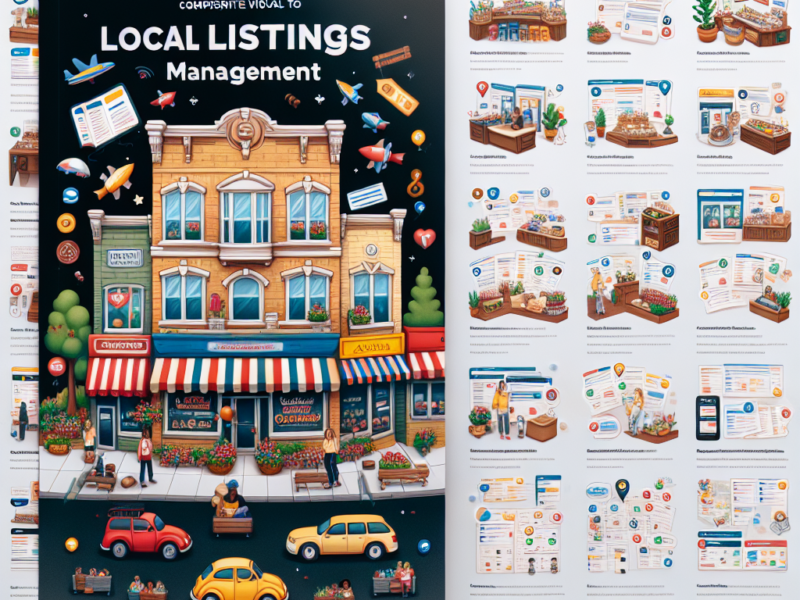10 Essential SEO Techniques for Boosting Your Website’s Visibility

Search Engine Optimization (SEO) is a critical component of digital marketing. As the digital landscape evolves, staying on top of SEO trends and techniques is essential for any website looking to improve its visibility and ranking on search engines like Google. This article explores ten essential SEO techniques that can help elevate your website’s search engine ranking and attract more organic traffic.
1. Optimize for Mobile First
With the increasing prevalence of mobile devices, Google has shifted to mobile-first indexing, meaning the mobile version of your website becomes the starting point for what Google includes in their index. To adapt, ensure your site is mobile-friendly with responsive design, fast loading times, and accessible navigation.
- Responsive design: Ensure your site’s layout adjusts seamlessly to different screen sizes.
- Speed optimization: Use tools like Google’s PageSpeed Insights to identify and fix slow-loading elements.
- Accessible navigation: Simplify your menu and keep it consistent across devices.
2. Focus on User Experience (UX)
Google’s algorithm updates increasingly prioritize sites offering a superior user experience. A well-designed UX enhances user satisfaction, thereby increasing the likelihood of visitors staying longer and engaging more with your content, which can positively impact rankings.
- Clear navigation: Make it easy for visitors to find what they need.
- Engaging content: Use headings, short paragraphs, and multimedia to enhance readability and engagement.
- CTAs: Include clear calls to action to guide users to the next steps.
3. Use Keyword Research Effectively
Keyword research remains a fundamental SEO technique. It involves identifying the words and phrases that potential customers use to search for products or services like yours. Tools like Google Keyword Planner or SEMrush can help you find relevant keywords.
- Long-tail keywords: Target longer, more specific phrases that are less competitive and more likely to convert.
- Search intent: Understand whether users are looking to buy, learn, or find a specific website.
- Keyword placement: Include keywords naturally in titles, headers, and throughout your content.
4. Optimize Page Titles and Meta Descriptions
Well-crafted page titles and meta descriptions can significantly impact your site’s click-through rate (CTR) from search engine results pages (SERPs). They act as a brief preview of what your page is about and should be compelling and keyword-rich.
- Title tags: Keep them under 60 characters to ensure they display fully in SERPs.
- Meta descriptions: Keep them under 160 characters and make them descriptive and engaging.
- Unique tags: Ensure each page has a unique title and description to avoid duplicate content issues.
5. Improve Site Speed
Site speed is a direct ranking factor. A faster website provides a better user experience and reduces bounce rates. Use tools like GTMetrix or Google’s PageSpeed Insights to analyze and optimize your site’s speed.
- Compress images: Use tools like TinyPNG to reduce file sizes without losing quality.
- Minimize code: Reduce unnecessary spaces, comments, and characters in your HTML, CSS, and JavaScript.
- Use a Content Delivery Network (CDN): Distribute the load by using a CDN to increase site speed globally.
6. Create High-Quality Content
Content is king in SEO. High-quality, engaging, and original content not only helps to establish your site as an authority but also drives more traffic and engagement, which are key metrics for ranking algorithms.
- Regular updates: Keep your content fresh and updated regularly to engage users and encourage them to return.
- Value-driven content: Ensure your content addresses your audience’s needs and questions.
- Use of multimedia: Incorporate images, videos, and infographics to break up text and add interest.
7. Utilize Internal Linking
Internal linking helps to establish site architecture and spread link equity (ranking power) around websites. By linking to your own posts or pages, you can guide visitors deeper into your website, keeping them engaged and improving your SEO.
- Logical structure: Use a clear and consistent structure that helps Google understand your site’s hierarchy.
- Anchor text: Use descriptive keywords that give an indication of the linked page’s content.
- Link quality: Link to important pages more often to increase their visibility and ranking.
8. Build Quality Backlinks
Backlinks — links from other websites to yours — are one of the strongest ranking signals in Google’s algorithm. The more high-quality, relevant sites that link to you, the more trustworthy your site appears.
- Guest blogging: Write articles for reputable sites in your industry to get quality backlinks.
- Broken link building: Find broken links on other sites and suggest your content as a replacement.
- Influencer outreach: Engage with influencers in your field to get your content shared and linked to.
9. Optimize for Local SEO
If you run a local business, local SEO can be extremely powerful. By optimizing your site for local search queries, you can attract more customers from your area.
- Google My Business: Claim and optimize your Google My Business listing to appear in local search results and Google Maps.
- Local keywords: Include location-specific keywords in your site’s metadata and content.
- Local backlinks: Try to get backlinks from local news sites, blogs, and businesses to increase relevance.
10. Monitor Your SEO Performance
Finally, it’s crucial to track your SEO performance to understand what’s working and what isn’t. Use tools like Google Analytics and Google Search Console to monitor traffic, rankings, and engagement.
- Set up goals: Track conversions, such as newsletter signups or product sales, to see how well your SEO efforts are translating into tangible results.
- Regular audits: Conduct SEO audits to identify and fix issues such as broken links, over-optimized content, or technical errors.
- Competitor analysis: Keep an eye on your competitors’ SEO strategies to see if you can learn from their successes or failures.
Conclusion
Implementing these ten essential SEO techniques will help you improve your website’s visibility and ranking on search engines. Remember, SEO is an ongoing process that requires continuous effort and adaptation to new trends and algorithm updates. By staying informed and proactive, you can ensure that your site remains competitive and visible in the ever


